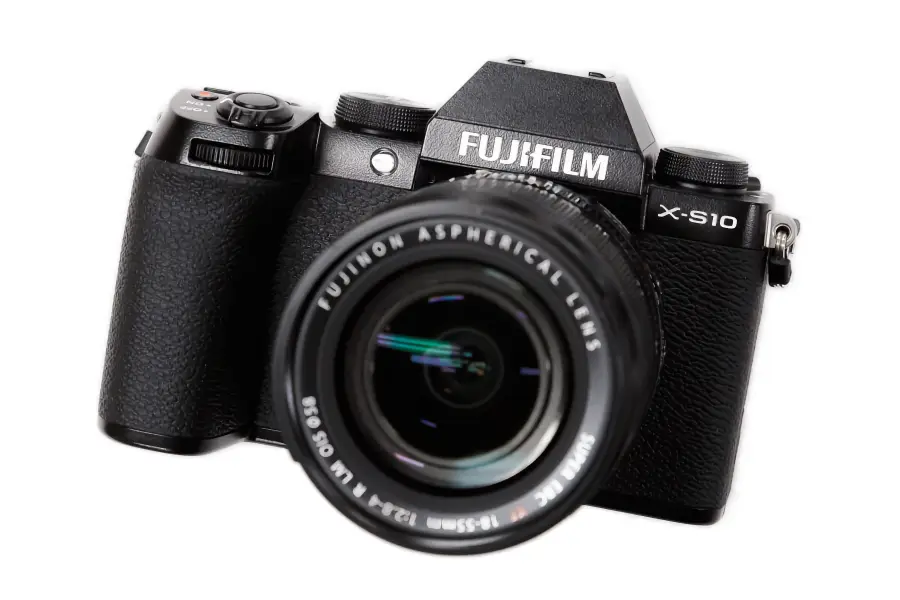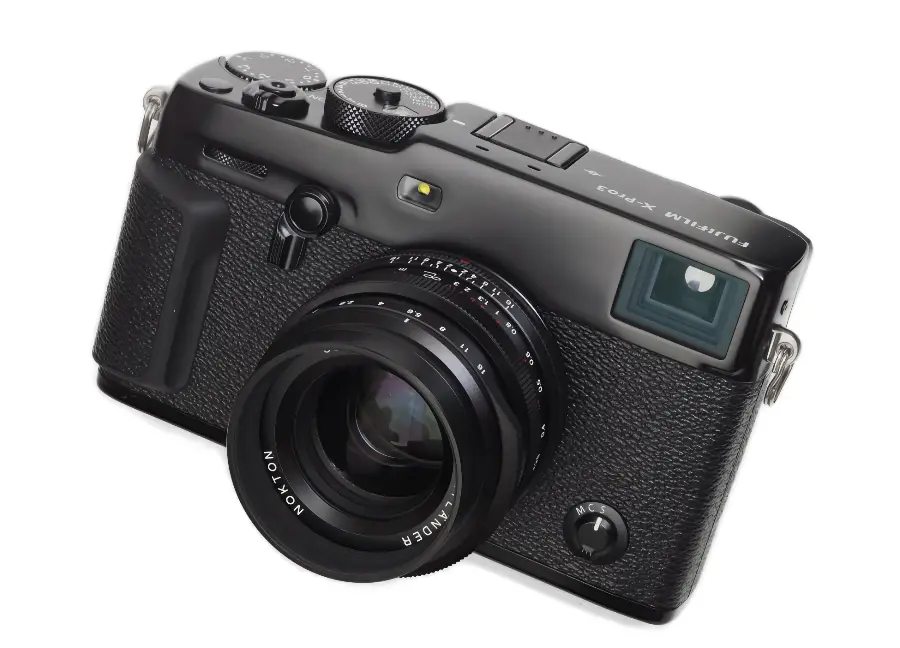
The Fujifilm X-Pro1, released in 2012, was Fujifilm’s first X-mount mirrorless camera. A decade after its release, this camera continues to be cherished by many photographers. With its unique X-Trans sensor, hybrid viewfinder, and analog-inspired operability, the X-Pro1 holds a special place in today’s digital camera market. In this review, we’ll examine the X-Pro1’s key features, pros and cons, and its value from a 2025 perspective.
📊 Fujifilm X-Pro1 Key Specifications

| Specification | Details |
|---|---|
| Sensor | 16.3MP APS-C X-Trans CMOS |
| Processor | EXR Processor |
| ISO Range | 200-6400 (expandable to 100-25600) |
| Continuous Shooting | Up to 6fps |
| Video | 1080/24p |
| Viewfinder | Hybrid Optical/Electronic |
| LCD | 3.0-inch 1,230k dots fixed |
| Weight | Approx. 450g (with battery) |
| Dimensions | 139.5 x 81.8 x 42.5 mm |
| Release Date | March 2012 |
🎨 Design and Ergonomics: The Essence of Retro Aesthetics
The Fujifilm X-Pro1’s design draws inspiration from classic film cameras and played a crucial role in establishing the identity of Fujifilm’s X series.
Classic Appearance

The X-Pro1’s body is crafted from magnesium alloy, providing both durability and premium feel. Its simple black design continues to captivate photographers even after years of use.
Analog-Style Control Dials

The shutter speed and exposure compensation dials on top provide an analog shooting experience in the digital age. This intuitive control method is highly appealing to many photographers.
Hybrid Viewfinder

One of the X-Pro1’s most distinctive features is its hybrid viewfinder. Users can switch between optical and electronic viewfinders to provide the optimal shooting experience for different situations.
📸 Image Quality: The Magic of the X-Trans Sensor
The heart of the X-Pro1 is its 16.3MP APS-C X-Trans CMOS sensor. This sensor employs Fujifilm’s unique technology to deliver film-like image quality.
X-Trans Sensor Characteristics

The X-Trans sensor uses a 6x6 color filter array different from traditional Bayer patterns. This reduces moiré effects and provides sharp detail while delivering excellent low-light performance.
Film-Like Colors and Textures

Many users discover film-like characteristics in X-Pro1’s images. This is particularly evident in JPEG output, where attractive images can be obtained without post-processing.
Film Simulation

Through Fujifilm’s famous film simulation feature, users can digitally recreate the characteristics of classic films like Provia, Velvia, and Astia. This is one of the X-Pro1’s major attractions.
🎥 Video Performance: Limitations of Its Era

The Fujifilm X-Pro1’s video capabilities are very limited by modern standards.
Basic 1080/24p Recording
While capable of recording 1080/24p full HD video, frame rate options are limited and bitrates are low, making it unsuitable for professional video production.
Limited Controls
Manual control of shutter speed, aperture, and ISO is restricted in video mode. The lack of an external microphone input also limits audio recording options.
Moiré and Aliasing Issues
The X-Trans sensor’s characteristics can lead to pronounced moiré and aliasing effects in video. This can be particularly problematic when shooting subjects with fine patterns.
🚀 Autofocus and Performance: Slow but Accurate

The Fujifilm X-Pro1’s autofocus system was not fast even at launch and feels particularly slow by modern standards.
Contrast-Detection AF
The X-Pro1 uses a contrast-detection AF system. While slower than phase-detection AF, it provides excellent accuracy.
Limited AF Points
Offering 49 AF points concentrated in the central area, this coverage is limited compared to modern cameras’ extensive AF coverage.
Continuous AF Limitations
Continuous AF performance for tracking moving subjects is significantly inferior to modern cameras. This limits the X-Pro1’s utility in dynamic scenes like sports or wildlife photography.
🔋 Battery Performance and Connectivity: Basic Fundamentals
The Fujifilm X-Pro1 offers basic battery performance and connection options.
Battery Performance

Using the NP-W126 lithium-ion battery, it can capture approximately 300 images per charge. While this is less than modern mirrorless cameras, it was adequate for its time.
Basic Connectivity Options

- USB 2.0 port
- Mini HDMI output
- Hot shoe
Wireless connection options like Wi-Fi or Bluetooth are not available, which might inconvenience modern camera users.
💡 User Experience: Strengths and Areas for Improvement

Extended use of the X-Pro1 reveals several distinct advantages and limitations.
Advantages
- Outstanding Image Quality: The X-Trans sensor produces unique and attractive images
- Classic Design and Operation: Analog-style controls enhance shooting enjoyment
- Hybrid Viewfinder: Benefits of both optical and electronic viewfinders
- Durability: Robust magnesium alloy body withstands long-term use
Areas for Improvement
- Slow Autofocus: AF speed significantly slower than modern cameras
- Limited Video Features: Only 1080/24p recording with limited manual controls
- RAW File Processing Challenges: Particularly early on, many software packages struggled with X-Trans RAW files
- Fixed LCD: Non-tilting LCD limits shooting angles
📊 Comparison with Competitors
Let’s compare the X-Pro1 with similarly priced competitors.
1. Sony NEX-7
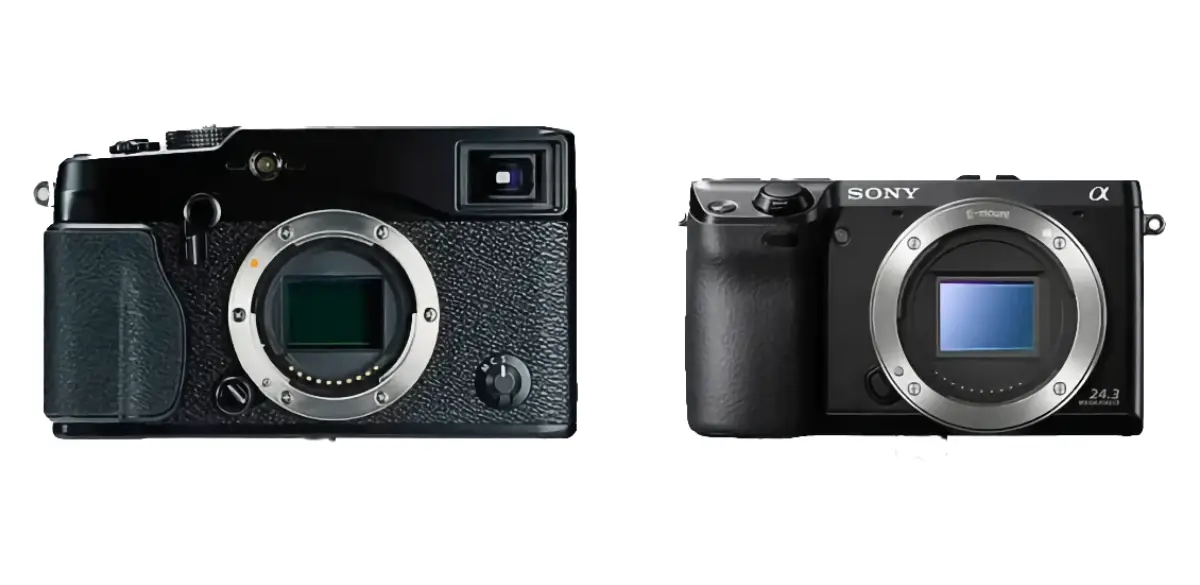
- Advantages: Higher resolution (24MP), tilting screen, faster continuous shooting
- Disadvantages: Lacks X-Trans sensor’s unique image characteristics, less intuitive controls
2. Olympus OM-D E-M5

- Advantages: Built-in image stabilization, faster AF performance, weather sealing
- Disadvantages: Smaller Micro Four Thirds sensor, no optical viewfinder
3. Leica M (Typ 240)
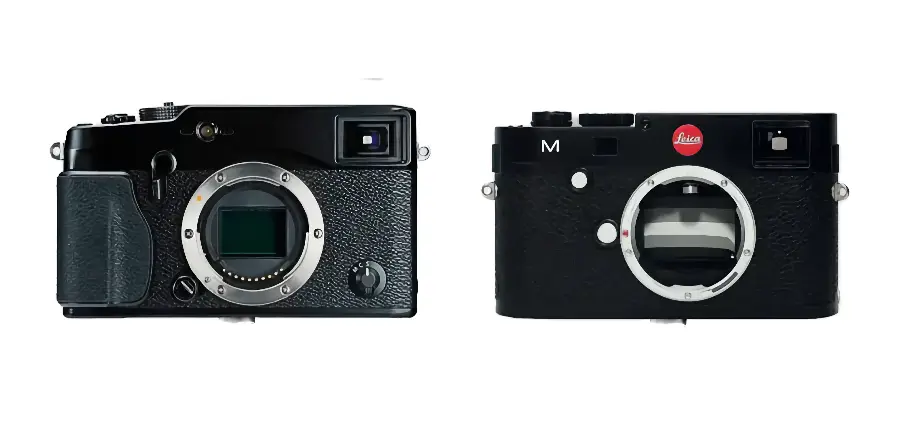
- Advantages: Full-frame sensor, higher resolution, Leica M lens compatibility
- Disadvantages: Much higher price, no electronic viewfinder
🎞️ Real-World Scenarios
Street Photography

The X-Pro1’s compact size, quiet shutter, and optical viewfinder make it ideal for street photography. Combined with the 35mm f/1.4 lens, it excels at capturing natural moments while adapting quickly to changing light conditions.
Landscape Photography

The X-Trans sensor’s excellent color reproduction and dynamic range shine in landscape photography. The Velvia film simulation particularly excels at creating vibrant landscape images.
Portrait Photography

When paired with the 60mm f/2.4 macro lens, it captures sharp portraits with beautiful bokeh. The X-Trans sensor’s natural skin tone reproduction minimizes post-processing needs.
Everyday Photography

The compact size and classic design make the X-Pro1 perfect for everyday shooting. With the 18mm f/2 lens, it becomes highly portable and ready for any shooting opportunity.
🔧 Firmware Updates and Current Value
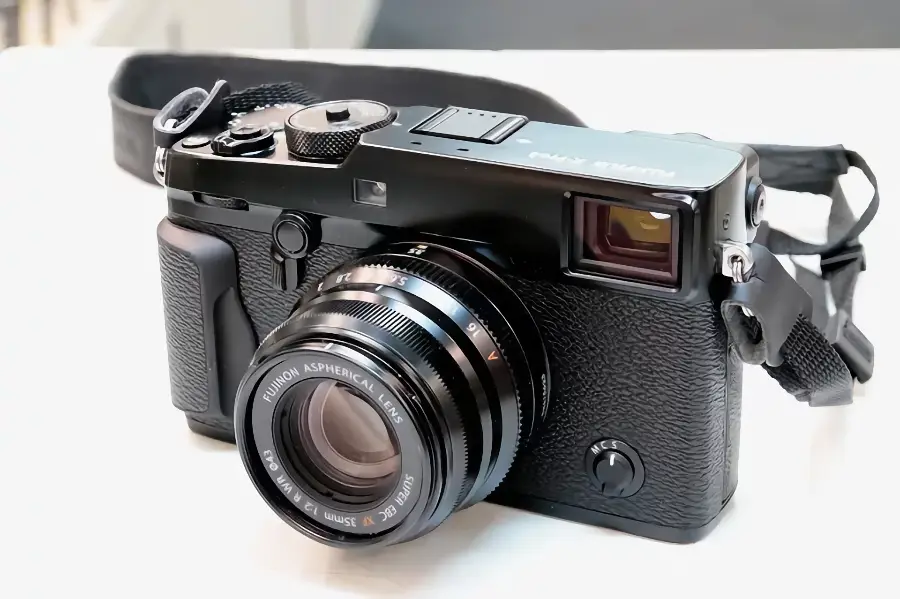
Fujifilm has provided continuous firmware updates for the X-Pro1, extending its lifespan and significantly improving user experience.
Key Firmware Update Features
- AF Performance Improvements: Focus speed and accuracy significantly enhanced
- Focus Peaking Added: Enables accurate manual focus confirmation
- Interval Timer Added: Enables time-lapse video creation
- Wi-Fi Card Support: Wireless image transfer possible through Eye-Fi cards
Current Value
As of 2025, the X-Pro1 is available in the used market for around $300-400. This represents excellent value considering the camera’s performance and unique characteristics, particularly for photographers seeking film-like image quality and classic shooting experience.
🎭 Recommended Lenses and Accessories

Recommended Lenses
- XF 35mm f/1.4 R: The perfect standard lens for X-Pro1, offering outstanding optical performance
- XF 18mm f/2 R: Compact wide-angle lens ideal for street photography
- XF 60mm f/2.4 R Macro: Versatile lens for both macro and portrait photography
Recommended Accessories
- Leather Case: Genuine leather case combining protection and style
- Hand Grip: Additional grip for more stable handling
- Eye-Fi Card: Adds wireless transfer capability to the X-Pro1
🏁 Conclusion: Who is the X-Pro1 For?

The Fujifilm X-Pro1 remains an attractive camera even after a decade. It’s particularly suitable for:
- Photographers who prefer film-like image quality
- Users who enjoy classic design and analog-style controls
- Street photographers and everyday shooters
- Those seeking high-quality images on a limited budget
- Users wanting an affordable entry into the Fujifilm system
However, it might be limiting for:
- Sports/wildlife photographers needing fast AF and high-speed shooting
- Videographers requiring 4K video and advanced video features
- Users wanting the latest technology and features

Overall, the X-Pro1 continues to win photographers’ hearts with its unique image quality, classic design, and intuitive operation. Despite some functional limitations, its distinctive shooting experience and output appeal strongly to photographers seeking analog essence in the digital age.
Scoring 8 out of 10, this camera comes highly recommended, particularly for photographers interested in experiencing Fujifilm’s color science and film simulations, or those who prefer classic operational style. Even in 2025, the X-Pro1 remains a timeless classic digital camera that maintains its value.







